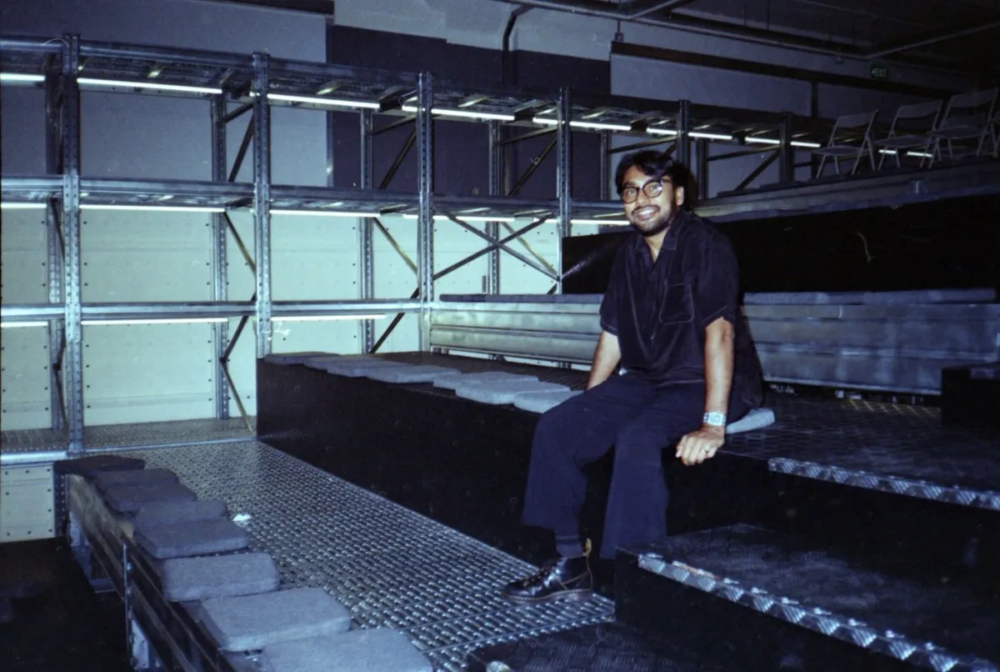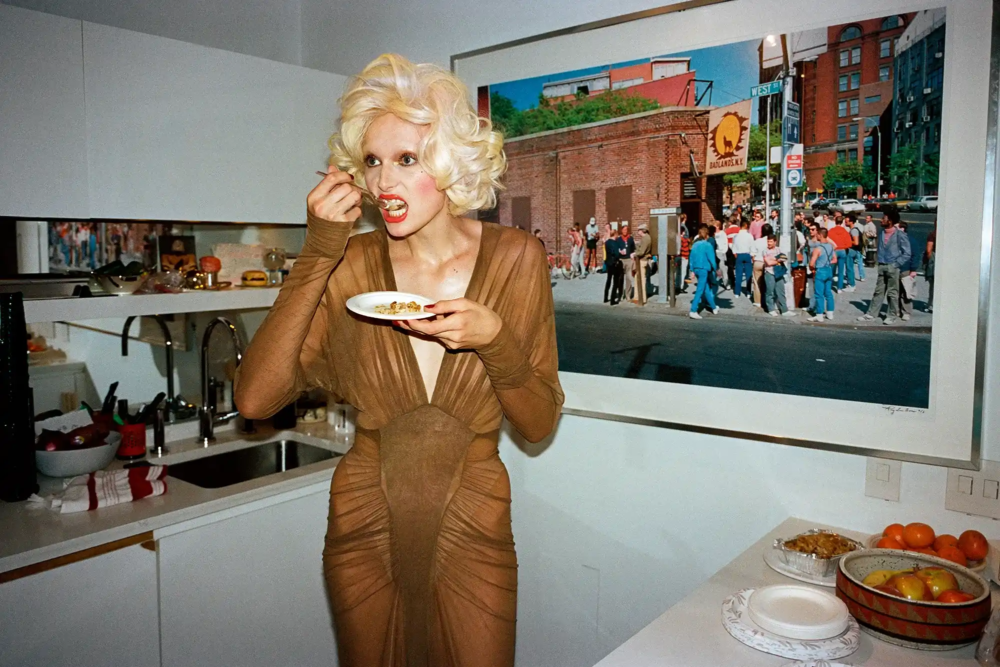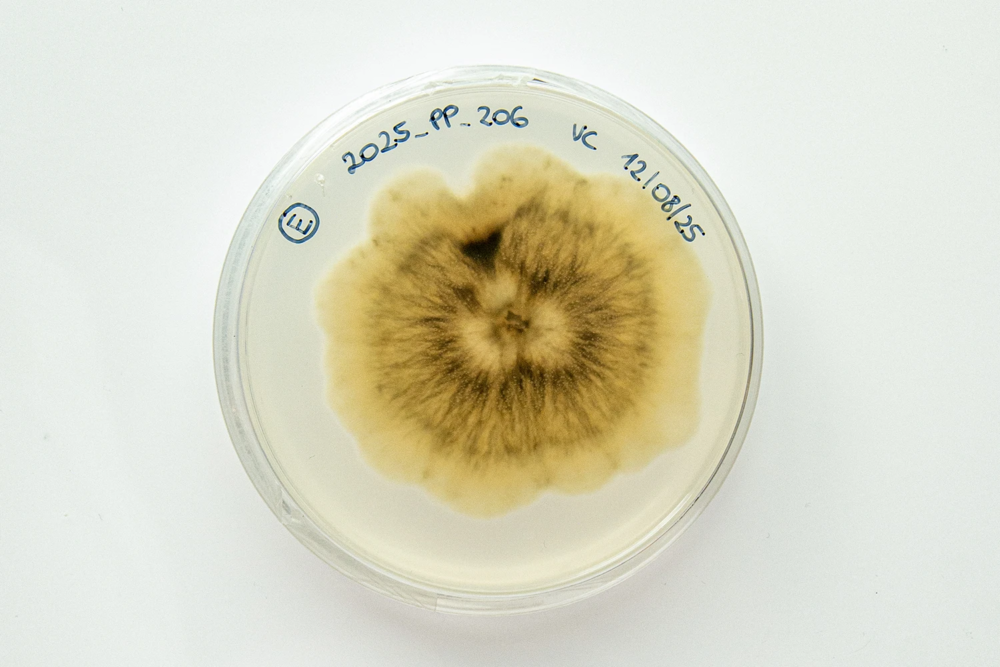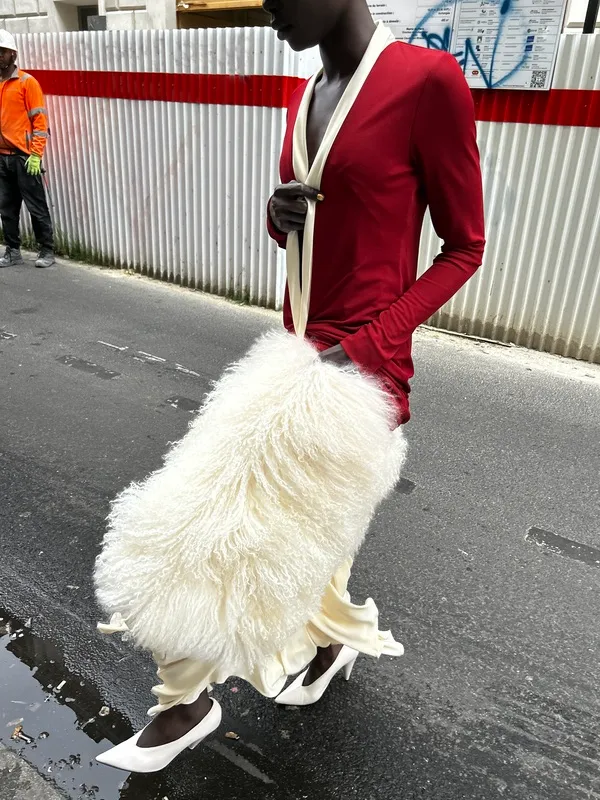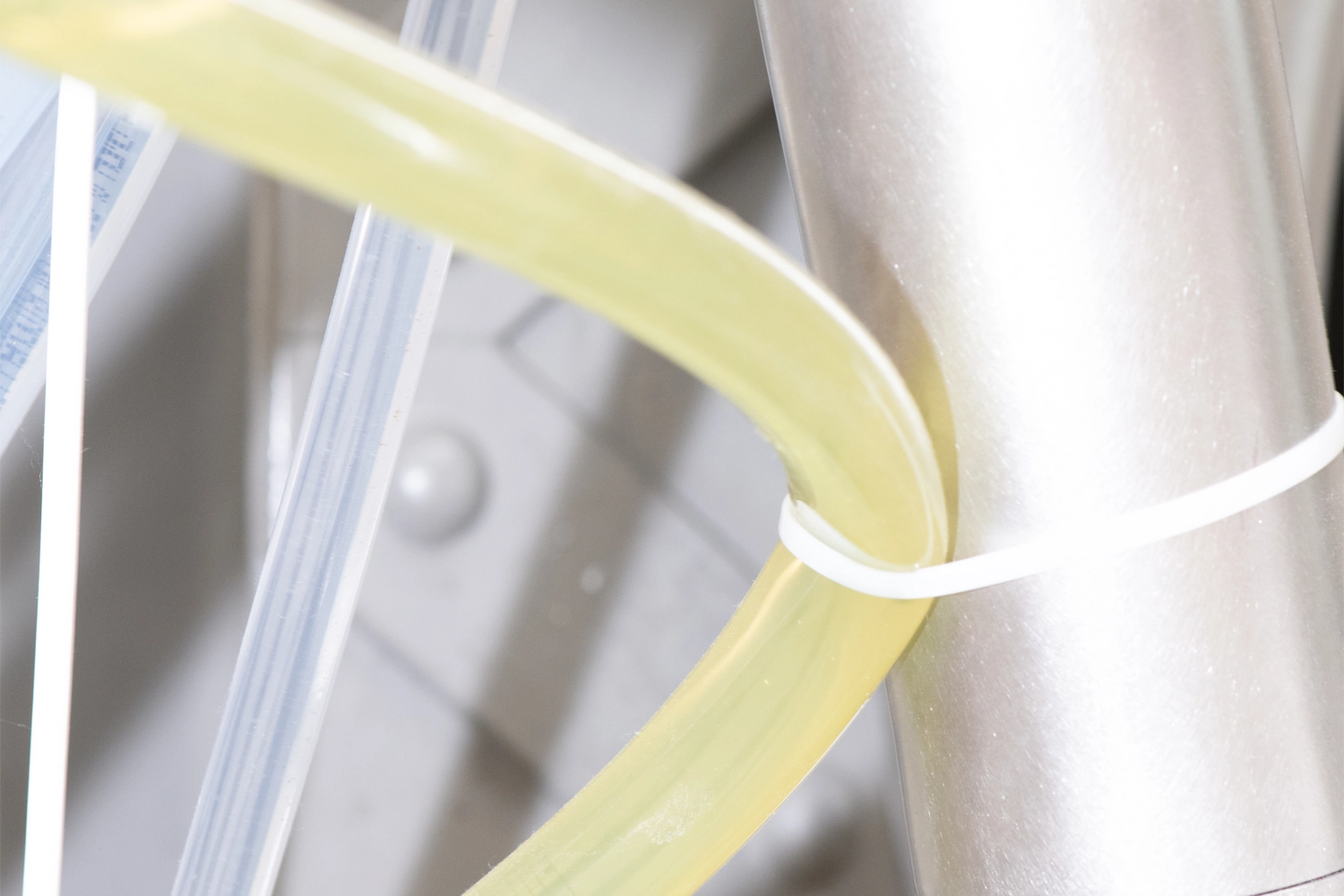
Archaic and futuristic: Attune by Alexandra Pirici
Pirici does not shy away from size, even comparing the soft hills of her sand dune formation to a large soft animal – Attune, the exhibition co-commissioned by Hamburger Bahnhof and Audemars Piguet Contemporary
Alexandra Pirici / Organic – Non organic
Alexandra Pirici finds comfort in the company of plants. She envisions a future with art spaces that function as performative sculpture gardens, where “non-animal life-forms and the practice of growing food could merge with aesthetic objects and practices, and with human performers”. Her aim begins to actualize through many of her pieces in Attune, the exhibition at the Historic Hall of Hamburger Bahnhof. She combines life forms with sculptures, performers, audio. The historic hall of the German institution have been transformed into a wonderland of grand scenes.
Pirici does not shy away from size, even comparing the soft hills of her sand dune formation to a large soft animal. The dunes are a display of dynamic self-organizing patterns such as those found in nature which are shaped by the unpredictable interactions that happen grain to grain and earthly elements such as the wind. In its natural environment wind brings sand particles into contact with the earth’s surface; just as nature does, Pirici brings the human body into a natural, articulated interaction with the element forever shifting the shapes of the dunes.
Alexandra Pirici / Archaic and futuristic
The use of physics, biochemistry, and molecular biology in the sculptures intertwined with elements of nature demonstrates the levels of self-organizing patterns in the natural world. These patterns can be seen in the natural state of these sculptures such as the ripples in the Sand Dunes or the self maximizing growth of appendages in Plant Growth. In concordance, Pirici’s Bénard Cells sculpture presents a system which returns to its hexagonal cells even when disrupted presenting a self-organizational process to show viewers the patterns of nature which trickle down to the molecular level.
Among her exhibition she presents an oscillating chemical reaction between three liquids mixing and shifting back and forth between deep yellow and deep purplish blue in a fully automated reaction thanks to collaboration with chemists and engineers. This Briggs-Rauscher Reaction demonstrates self-organizing patterns in chemistry which scientists regard as a potential model for the emergence of life in biochemical systems which can shine a light to understanding life-forms present alongside humans. Pirici’s Chemical Gardens resemble living organisms such as coral, plants, and fungi, mimicking biological growth and its forms which are relevant in evolutionary research and theoretical biology.
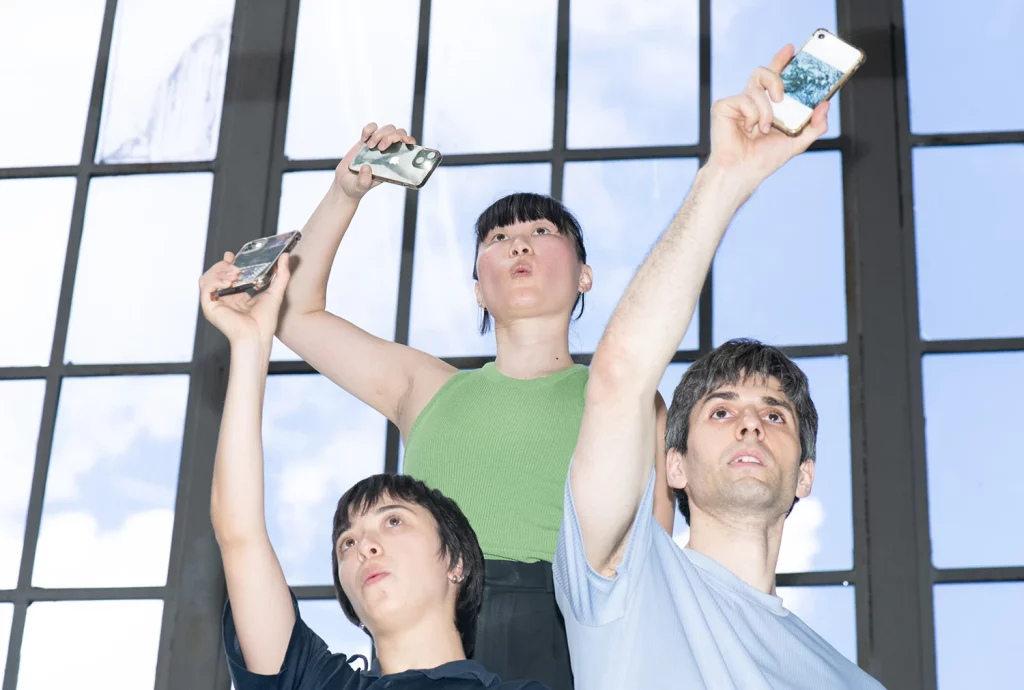
Alexandra Pirici / Attune
Attune was born out of the artist’s interest in exploring the human relationship to other life forms and to bring humans closer to these other forms of natural embodiments. Her interest in this dynamic expands to include non-living material configurations and their performativity. Self-organization serves as a theme in her work as she seeks to understand the principle of order and structure in the world around and within us. Pirici’s work bridges the aesthetics of nature with the credentials of science, and brings together sculptures with human dance and movement. Pirici wants to challenge the perception of dance and movement purely as a visual substance, she challenges us to think about movement in the context of volume and space and the experience of the body in these contexts.
The combination of sculptural and performance pieces shape her creative process in a way that involves movement and an active approach when working with and perceiving her material, whether it be the human body or other kinds of matter. Pirici shares that she emphasizes this same approach in her teachings, importing to think of performance as an intermedial field, where all sorts of objects, agents and materials can be experimented with.” She shares that her work will continue moving in the same direction it has been moving towards until now, “a more complex one, involving other materials and other agents alongside the human body.” The refined composition of the varying elements of Piricis’s practice presents a perspective of the earthly human condition that is as deep as the molecules of life and as expressive as movement to music, making sure to activate as many senses as possible to bring viewers into the exploration of Pirici’s life forces.
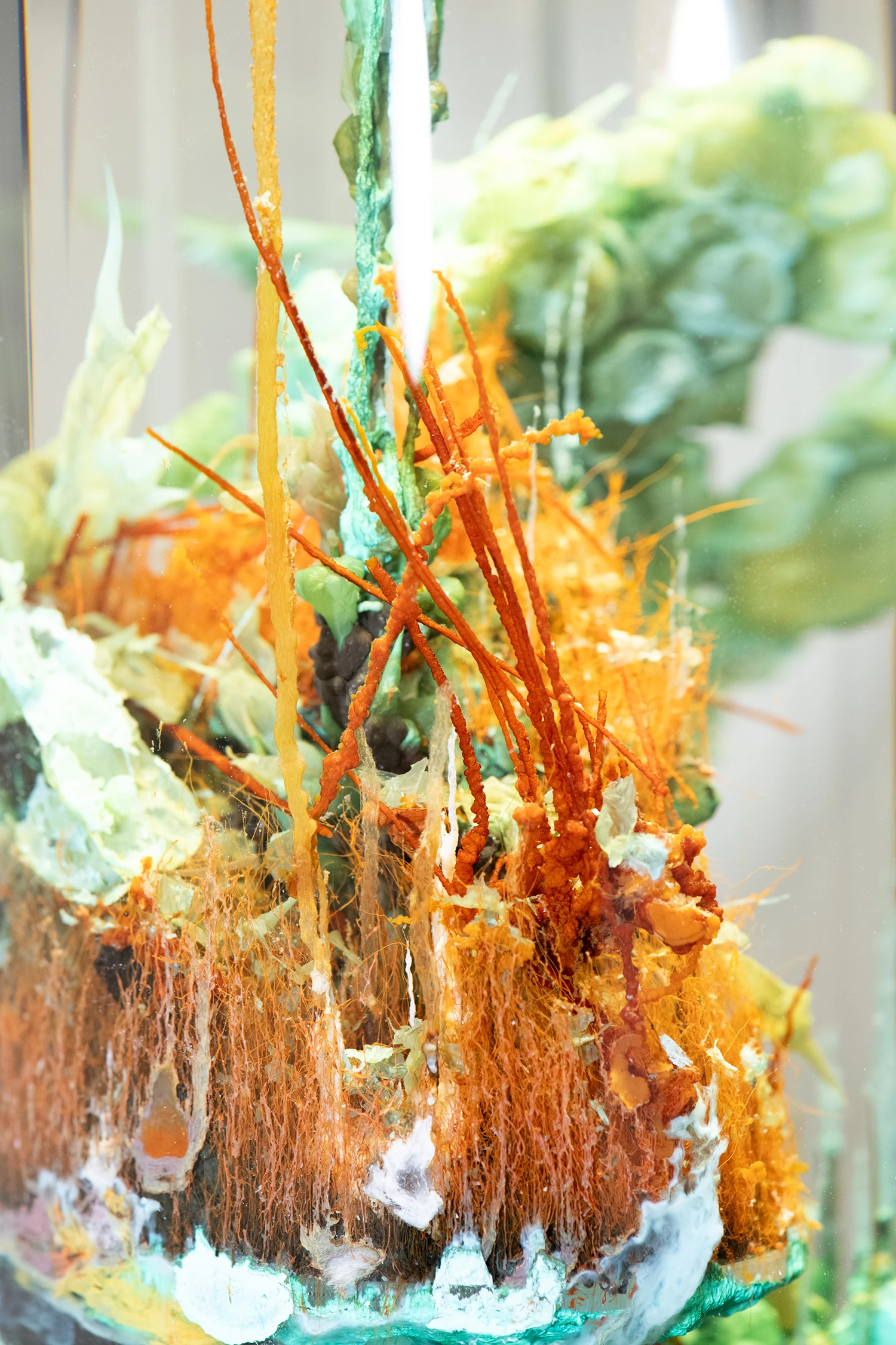
Alexandra Pirici / Audemars Piguet Contemporary
Since her exhibition in the Romanian Pavilion of the Venice Biennale in 2017 with her work, An Immaterial Retrospective of the Venice Biennale, which was the only performance in the international exhibition, Audemars Piguet Contemporary curators have been paying attention to Alexandra Pirici. She later returned in 2022 with her piece Encyclopedia of Relations – an Audemars Piguet Contemporary commission. The elements of Pirici’s previous work can be found again in a more complex and elaborated way in Attune. The lens in which Pirici looked at relationships – relationships between humans and animals, humans and the environment, animals and the environment, and even between plants – aligned with the programme’s goal of connecting people through culture by fostering spaces which allow you to learn more about yourself and as a result about each other.
Denis Pernet – one of the two Audemars Piguet Contemporary curators – states, “The new work at the Bahnhof, is totally in this; this idea that you can learn from the environment, from nature, from living creatures, but also from non organic elements such as chemical reactions that have a way to harmonize, symbolize each other, and look like, and behave like, life forms in the way they they structure themselves.” In accordance with Audemars Piguet Contemporary’s carte blanche commission process from conception to exhibition, Pirici was free to pursue her artistic interests and research at this stage of her career.
Pirici’s background is not explicit in her work, but when understanding the context of her lifestyle being split between different worlds, it makes sense to see her work focus on elements that remain the same everywhere – the raw elements of humanity and nature and displaying this relationship in a refined and complex way. Pernet describe having
a reaction when witnessing the harmonization with the scale of the main hall filled with Pirici’s vast sculptures such as the sand dune and metallic structures with a chemical reaction, revealing the beauty of the exhibition brought him to tears. The movement of the dancers and polyphonic singing that the performers were enacting in the acoustic hall were described by Pernet as almost highly emotive. For the first time, there was an emotion that I don’t feel that often with contemporary art.” A special element in Pirici’s Attune, is that it has components of permanence with fully automated chemical reactions built with chemists and engineers, but also a fleeting beauty in performances that demand to be experienced and cannot be automated to a constant loop.
Pernet finds there is an everyday element in it which makes it accessible. The chemical reactions are done at a scale that is unattainable by the average person but it can be reminiscent of experiments done in school that were meant to connect human life to the intricacies of biology and chemistry. Pirici’s presentations of plants and stones are elements that connect with our daily environment that she presented in a sophisticated way. In these ways, Pernet suggests that Pirici’s approach and execution connects people to the artwork but also their daily life when taking in the knowledge of the different elements and living with it in daily life.
Alexandra Pirici / East – West
Alexandra Pirici keeps one foot in Western Europe and the other in Eastern Europe: she splits her time between Munich and her native city, Bucharest. She focuses on the unpredictability, being influenced by the spirit of the Romanian capital: its many layers of history and architecture remember so many of the city’s ideological and political changes. In the 16th and 19th centuries, Bucharest’s streets were crowded with artisans and merchants; its Art Deco palazzos earned it the moniker Paris of the East. The neglected Communist dormitory neighborhoods and the Neoclassical Palace of Parliament has reflected in the unbound parameters in which Pirici conducts her practice.
There is a dichotomy in Pirici’s work as she, too, balances different elements in her creative practice that capture the cultural aspects of her surroundings. The archaic and futuristic elements in her art find a balance just as she does with her choice to combine feelings of ‘home’ in straddling Western and Eastern European lifestyles where dynamics are mirrored and amplified at a larger scale.
Pirici’s heritage and upbringing in Bucharest have encouraged what she refers to as a “lack of naivety,” which, manifested into aesthetic and conceptually complex views The complications of the world and the context of her background have allowed her to register and imagine experiences that explore other ways of thinking, making her grateful for the hardships and tumultuous history of her birthplace. While she doesn’t work with her cultural heritage in explicit ways, Pirici believes that the mixed and changing cultures, geography and landscape, family and friends, influence art practices and manifest in subtle ways.
The complexities of humans and the life forces surrounding us are front and center in Pirici’s displays. Pirici brings together the evidence of life and the science of life to the stage in the proportions of her work and the breadth of matter used to demonstrate these dynamic and animate works.
The original exhibition will never be able to be installed in the same form again. The size and scale of Pirici’s work, alongside the various elements, make her exhibition one of a kind.


